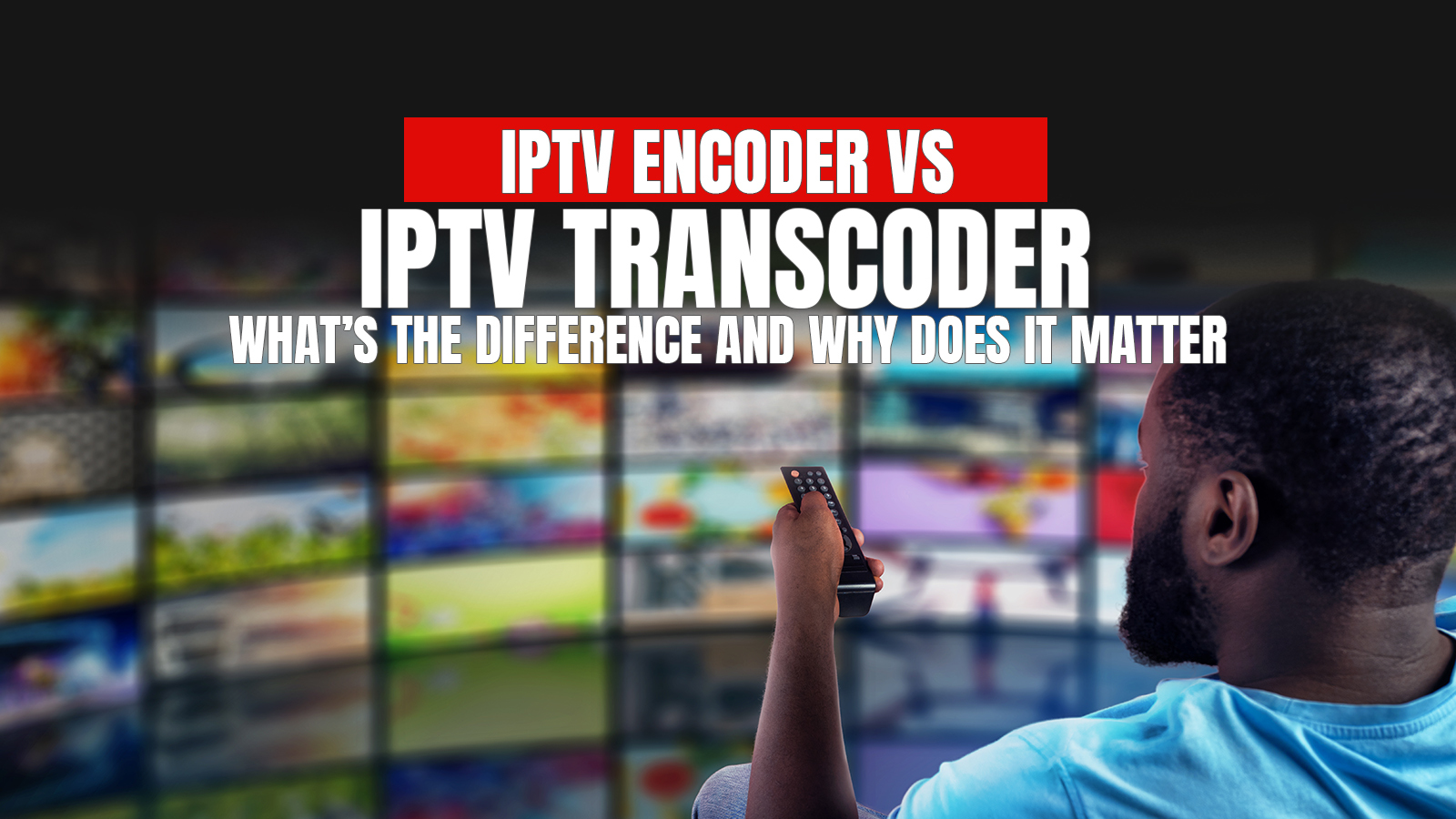
Encoding basically refers to the process by which raw digital media data is converted into a specific digital format for efficient storage, transmission, or playback. Consider the digital media as a raw input and the specific formatting of it as output.
On the contrary, transcoding involves converting an already encoded media file from one format to another. It is often performed to improve compatibility across different devices or internet connections.
Well, how does that relate to an IPTV service?
Let’s understand what IPTV encoding and transcoding are, the key differences between the two, and does it matter in detail.
Table of Contents
ToggleWhat Are IPTV Encoders And IPTV Transcoders?
IPTV encoding is the first step and most important step towards efficient content delivery. It’s like converting the bulk of unformatted data into meaningful, properly formatted data compatible with different IP networks. Generally, this raw content comes from live sources such as satellite feeds, cameras, or analog TV signals. The IPTV encoder takes this data and compresses it using a codec (like H.264 or H.265), making the video smaller in size without sacrificing too much quality.
On the split side, the functioning of the IPTV transcoder is much more complex. Once the data is encoded, the transcoder initiates its activity. It transforms the encoded data to adapt to different resolutions, bandwidth, and format conditions to suit a wide range of devices. For example, a video encoded at high resolution might need to be transcoded to a lower resolution for viewers using Infuse on a mobile device with limited bandwidth.
7 Key Differences Between IPTV Encoders And IPTV Transcoders
- Primary Functioning:
The primary function of an IPTV encoder is to convert raw digital media data into properly compressed files. It’s a one-time transformation from analog or uncompressed digital video into a format suitable for IP networks.
On the other hand, the primary function of an IPTV transcoder is to refine and reformat an already formatted piece of content. It holds specific importance in circumstances where the video/content quality changes in real time depending on the viewer’s internet speed.
- Input Source:
The primary source of input for an IPTV encoder is uncompressed files from the camera, live streams, or other analog/digital devices.
Meanwhile, the input source for an IPTV transcoder can be any encoded stream. This could be a video that’s already in an H.264 format but needs to be converted to H.265 or adjusted for a different resolution to be better optimized.
- Processing Complexity:
Generally, the processing of an IPTV encoder doesn’t involve much complexity. It’s a straightforward process.
Uncompressed raw data (input) → Compressed/formatted files (output)
It involves capturing, compressing, and formatting content, a linear and predictable process handled by an IPTV encoder.
On the other hand, transcoding is a comparatively complex/resource resource-intensive process. The IPTV transcoder must decode the content, make necessary changes (such as altering codecs, resolution, or bitrate), and then re-encode it. This process demands more powerful hardware or cloud-based solutions to maintain performance.
- Real-Time Capabilities:
An IPTV encoder is built for real-time video processing. Live broadcasts rely heavily on encoders because they must quickly compress and deliver video streams with minimal delay.
An IPTV transcoder, although it can work in real-time, is often used post-encoding or for on-demand content. The nature of transcoding introduces additional latency, so while it supports live use cases, it’s more common for preparing content for different playback scenarios.
- Output Flexibility:
The output of an IPTV encoder is typically a single stream in a fixed format and resolution, ready for immediate distribution or further processing.
An IPTV transcoder, in contrast, provides multiple outputs. It can generate streams in various resolutions (720p, 1080p, 4K) and bitrates to accommodate different devices and internet speeds. This is highly essential for platforms like Infuse, which prioritize smooth, adaptive playback across both Apple TV and iOS.
- Device Compatibility:
The IPTV encoder creates one stream that may or may not be compatible with all devices. It assumes a standardized playback environment.
The IPTV transcoder ensures broader compatibility. It adjusts streams so they work perfectly across a range of devices and media players that support different audio and video formats, subtitles, and network protocols. Without transcoding, users might face compatibility issues and degraded quality.
- Cost and Resource Allocation:
In general, IPTV encoders are less expensive and demand fewer computing resources. They’re often deployed at the content source and are designed to run continuously.
IPTV transcoders, however, require powerful CPU or GPU capabilities and are more expensive to operate. Given the complex processing they perform, especially for adaptive streaming, the cost is justified for providers who want to offer a premium experience through platforms.
Final Thoughts:
It is important to understand the difference between an IPTV encoder and an IPTV transcoder for delivering high-quality IPTV services. While the encoder is the entry point for transforming video into streamable formats, the transcoder ensures that those streams are accessible, flexible, and user-friendly.If you’re a content provider, IPTV platform owner, or viewer looking to optimize your experience, these two components are the pillars of your infrastructure. And if you’re wondering how to create and present your content effectively, our guide on the best IPTV channel guide is a great place to start.
